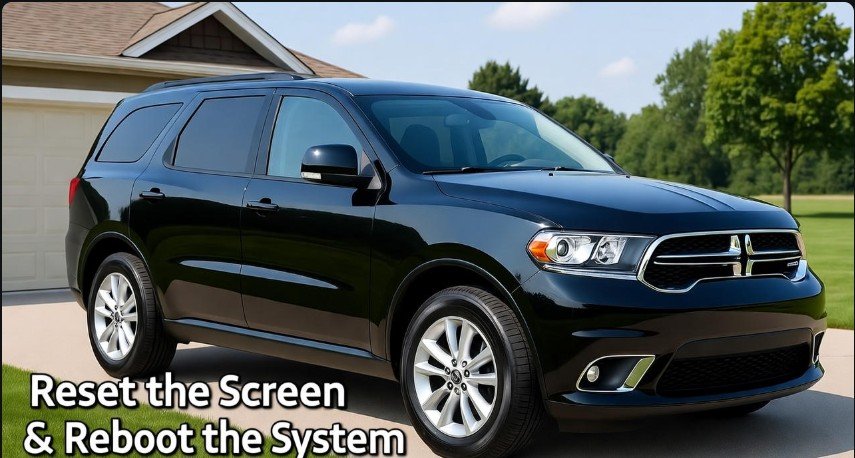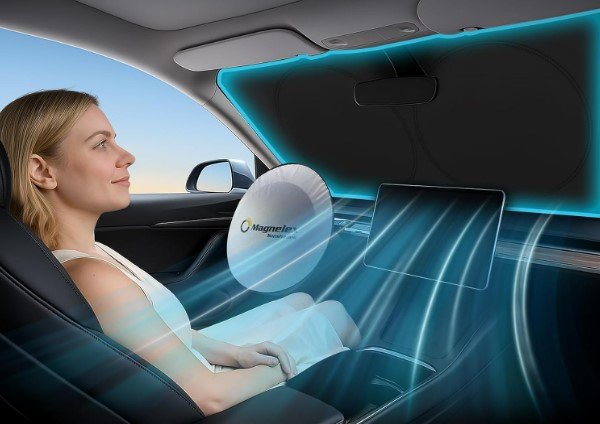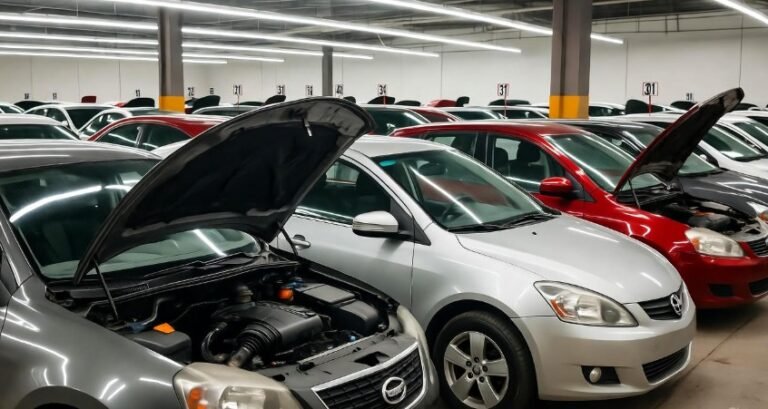How to Reset Dodge Durango Screen And Reboot System: A Friendly Step-By-Step Guide

Driving a Dodge Durango feels smooth until the infotainment screen decides to freeze like a paused movie. It can happen to anyone. You tap the screen, but nothing moves. You swipe again, and the screen stays stuck. In moments like this, knowing how to reset Dodge Durango screen and reboot system feels like having a secret key that brings everything back to life. Think of it like restarting your phone when it lags. A quick reset can clear out the tiny bugs hiding under the hood of the software. Many drivers panic when the screen freezes, but the fix is often simple and safe. This guide walks you through the process in easy steps. The words are simple. The tone is friendly. And the goal is to make sure you feel confident even if you are not a tech expert. You will learn why resets matter, how the reboot works, and how you can keep the screen running well in daily use.
Why the Dodge Durango Screen Needs a Reset Sometimes
The infotainment screen in the Durango works like a digital brain. It talks to the radio, the navigation, the climate system, and other features you use each day. When it glitches, the whole driving experience feels off rhythm. Many owners see freezes after long drives, cold starts, or system updates. A reset helps the screen breathe again. When you perform a reboot, the system clears temporary errors that build up from daily use. These errors are small but can cause big headaches. Think of dust on a camera lens. The dust is tiny, but it ruins every photo until you clean it. The same idea applies to the Durango screen.
Here are common reasons you may need a reset:
-
Touch commands stop working for a few seconds
-
The screen freezes on a menu
-
Audio controls respond late
-
A new software update doesn’t load fully
-
Apps act slow or glitch during use
When you know how to reset Dodge Durango screen and reboot system, the fix becomes simple. You avoid long trips to service centers. You save time. And you feel more in control of your SUV.
How System Glitches Affect Daily Use
When the Durango screen starts acting strange, it affects more than just music. It affects focus. It affects comfort. Sometimes you tap the climate button and nothing changes. Other times the map won’t load during a trip. These problems break the flow of driving. A screen that hangs can be distracting. You waste seconds trying to get it to work, and each second counts on the road.
A screen glitch works like a slow internet connection at home. You know the feeling. You open a website, and it just keeps loading. You tap again, hoping for a miracle. But nothing moves. When the Durango screen lags, the frustration feels the same. A simple reset can wipe out the digital clutter that creates the slowdown. The good part is that your personal settings or saved radio stations usually stay safe. The system only refreshes its temporary memory. The core features remain intact.
The Role of System Updates in Screen Freezes
Software updates are important for good performance, but sometimes they trigger small bugs. After an update, the screen may act slow. Menus may feel heavy. Certain apps may not open. This happens because the system needs a fresh restart to blend new code with old files. If you skip the reset, the screen may keep acting odd. Think of it like installing new apps on your phone and not restarting it afterward. The phone works, but not smoothly. When you learn how to reset Dodge Durango screen and reboot system, you also learn how to help the vehicle adjust to updates.
Often, a reset after an update:
-
Loads new features the right way
-
Clears leftover data from old versions
-
Syncs the system for smoother performance
-
Fixes minor bugs in the touchscreen response
This step helps the screen move like new again.
Step-by-Step: How to Reset the Dodge Durango Screen
Resetting the Durango screen looks harder than it is. But in truth, the process feels simple once you try it. You don’t need tools. You don’t need technical skills. You just follow a few steps, and the system handles the rest. The goal is to give the screen a clean start. And like rebooting your laptop, the process clears short-term memory without touching the deeper system settings.
Steps to reset the screen:
-
Turn on the engine and keep the Durango parked.
-
Go to the main screen and tap Settings.
-
Scroll to System Settings.
-
Look for Master Reset or Factory Reset.
-
Tap the option to begin the reset.
-
Confirm the reset when the message appears.
-
Wait for the screen to restart on its own.
-
Re-enter your personal preferences if needed.
During the reset, the screen goes blank. Do not press extra buttons. Do not turn off the engine. Let the process run like a soft breeze cleaning the system from inside.
Soft Reset vs Hard Reset: What’s the Difference?
Many owners confuse soft resets and hard resets. But the difference is simple. A soft reset restarts the screen without removing your personal data. A hard reset wipes all settings and puts the system back to default mode. A soft reset is like closing and reopening an app. A hard reset is like reinstalling the entire app from the store. Most screen freezes need a soft reset. You will only need a hard reset when the problem feels deep or keeps coming back.
Here is a simple comparison:
| Type of Reset | What It Does | When to Use |
|---|---|---|
| Soft Reset | Restarts the screen only | When the screen freezes or lags |
| Hard Reset | Returns system to default | When glitches keep coming back |
| Master Reset | Removes personal settings | After updates or major issues |
| Factory Reset | Reloads system fully | For severe software errors |
Learning how to reset Dodge Durango screen and reboot system gives you the power to choose the right type of reset without guessing.
The Screen Reboot Countdown: What to Expect During Restart
Once you start the reset, the screen will turn off. The blank screen may worry some drivers, but it is part of the process. The system needs a few seconds to clear memory. During this time, nothing responds. It feels like the moment before a computer restarts. After the short pause, the Dodge logo appears again. The system loads fresh files. The menus open in their default state or in your last saved state based on the type of reset you used. The entire process usually finishes in under a minute.
Many drivers say the screen feels faster right after the reboot. The apps open smoother. The touch feels more accurate. And the menus respond quicker. A fresh restart works like opening the windows in a room after a long day. It lets new air flow in and clears the heavy feeling out.
Preventive Tips to Keep the Screen Running Smooth
The best fix is prevention. If you take care of the screen, you will need fewer resets. Many problems come from heat, dust, and outdated software. Small habits can help your Durango system last longer and stay stable. You can protect the system by keeping the software updated and avoiding long periods of extreme temperature. A clean screen also responds better. Smudges and dust affect the touch layer more than most people realize.
Helpful habits include:
-
Check for updates once a month
-
Use a soft cloth to clean the screen often
-
Avoid touching the screen with wet hands
-
Keep the car out of direct heat when possible
-
Use gentle taps instead of heavy pressure
-
Restart the system once every few weeks
When you combine these habits with the knowledge of how to reset Dodge Durango screen and reboot system, you create a smooth experience that lasts.
Common Mistakes to Avoid When Resetting the Durango Screen
Even a simple reset can go wrong if you’re not careful. Some owners panic when the screen goes blank and press random buttons. Others turn off the engine thinking the reset is stuck. These actions can interrupt the process and delay the reboot. Remember, the system is just restarting. It’s doing its job quietly. Like rebooting your laptop, patience is key. The screen doesn’t need you to “help” it along—it just needs a clear path to refresh.
Other mistakes include:
-
Skipping updates: Ignoring software updates can increase glitches.
-
Using harsh cleaning tools: Avoid paper towels or abrasive materials. They can scratch the touchscreen.
-
Pressing too many buttons: Multi-tapping while the screen resets may confuse the system.
Being mindful of these mistakes ensures a smooth reset every time. Think of it as letting dough rise: interference can ruin the final result, but giving it time produces perfect consistency.
How to Reconfigure Settings After a Reset
After the system reboots, you may notice that some personalized settings—like preferred radio stations, climate preferences, or navigation favorites—need to be re-entered. While the reset usually doesn’t delete saved accounts or major system data, minor adjustments might be necessary. It’s like refreshing your workspace after a power outage. Everything is intact, but your mouse or keyboard shortcuts might need a small tweak.
Here are some steps to reconfigure the Durango screen efficiently:
-
Check audio settings and adjust volume, balance, and equalizer.
-
Re-enter your navigation preferences and home address.
-
Adjust climate settings to match your comfort.
-
Reconnect paired devices such as smartphones or Bluetooth accessories.
-
Review system update logs to ensure the latest software version is running.
By doing this, your Dodge Durango screen feels familiar again while performing at optimal speed.
Troubleshooting Persistent Screen Issues
Sometimes, even after a reset, the screen may continue to misbehave. If glitches persist, it’s important to dig a bit deeper. Problems may arise from hardware issues, connectivity conflicts, or deeper software corruption. In such cases, a DIY reset may not be enough. Professional intervention ensures that the underlying problem is fixed before it worsens. A certified Dodge technician can run diagnostic tests and provide precise solutions.
Here are signs you may need professional help:
-
The screen frequently freezes immediately after reboot
-
Touch inputs respond inconsistently or intermittently
-
Audio or navigation apps fail to load
-
The system shows error codes that you cannot resolve
Addressing these early prevents small glitches from turning into expensive repairs. A timely visit to the service center keeps your Durango running smoothly and preserves resale value.
Tips for Maintaining Long-Term Performance
Maintaining the Durango infotainment system is about more than resets. Regular maintenance creates a stable digital environment. A clean screen, proper temperature control, and periodic software checks reduce the frequency of freezes. Think of it as caring for a plant: consistent attention and a little nurturing go a long way.
Helpful tips include:
-
Keep the dashboard area free of dust and sunlight exposure
-
Avoid sudden temperature changes inside the cabin
-
Use gentle pressure when touching the screen
-
Restart the system occasionally to clear temporary cache
-
Always install official software updates from Dodge
These small habits keep the screen responsive, fast, and reliable for years to come.
Benefits of Knowing How to Reset Dodge Durango Screen
Understanding the reset process isn’t just convenient—it’s empowering. You gain the ability to resolve minor glitches immediately. This knowledge saves time, reduces stress, and helps maintain focus while driving. Imagine being on a road trip, and suddenly the navigation freezes. Instead of panicking, you perform a quick reset and get back on track within seconds. That sense of control enhances your driving experience and confidence with your SUV.
Other advantages include:
-
Avoiding unnecessary service trips
-
Protecting sensitive data by opting for soft resets
-
Improving system responsiveness
-
Extending the lifespan of the infotainment system
Reset knowledge is like a toolbox for your Durango: compact, accessible, and capable of solving everyday problems.
Frequently Asked Questions (FAQs)
1. How Do I Reset the Dodge Durango Screen?
Press and hold the power button on the screen for around 10 seconds until it turns off. Release the button, and the screen will reboot automatically. For deeper resets, follow the master reset steps in the settings menu.
2. Why Is My Dodge Durango Screen Frozen?
Freezing usually happens due to temporary software glitches, outdated software, or excessive cached data. A soft reset often clears the issue. If the problem persists, a system update or professional check may be needed.
3. How Long Does It Take To Reset the Screen?
A soft reset typically completes in under 30 seconds. The system refreshes and reboots quickly, letting you get back to your music, navigation, or climate controls.
4. Will Resetting Delete My Settings?
No, a soft reset does not remove personal settings. Only a factory or master reset may require reconfiguring some preferences.
5. Can Extreme Temperatures Affect the Screen?
Yes. Excessive heat or cold can cause temporary glitches. Park in shaded areas or moderate cabin temperatures to reduce the risk.
6. What If the Screen Keeps Freezing After a Reset?
Persistent issues may indicate a deeper software or hardware problem. Contact a certified Dodge technician for a full diagnostic.
7. Is There a Way to Prevent Screen Glitches?
Yes. Keep software updated, clean the screen regularly, avoid extreme temperatures, and restart the system occasionally. These preventive measures reduce freezes and lag.
8. Can I Use a Stylus If the Screen Isn’t Responding?
Using a stylus or gloved finger can help temporarily. It is especially useful if the touchscreen responds inconsistently to regular touch.
Conclusion: Keep Your Durango Screen Smooth and Responsive
Learning how to reset Dodge Durango screen and reboot system is a simple but powerful way to ensure your SUV’s infotainment system stays reliable. Most glitches are temporary, and a reset brings the system back to life in seconds. Combined with preventive maintenance and occasional system checks, this knowledge keeps your Durango performing at its best. Remember, patience and careful handling during resets are key. Treat your screen like a sensitive instrument—it’s the digital hub of your vehicle, and a little care goes a long way. With these tips, your Durango will feel as responsive as the day you first drove it.






